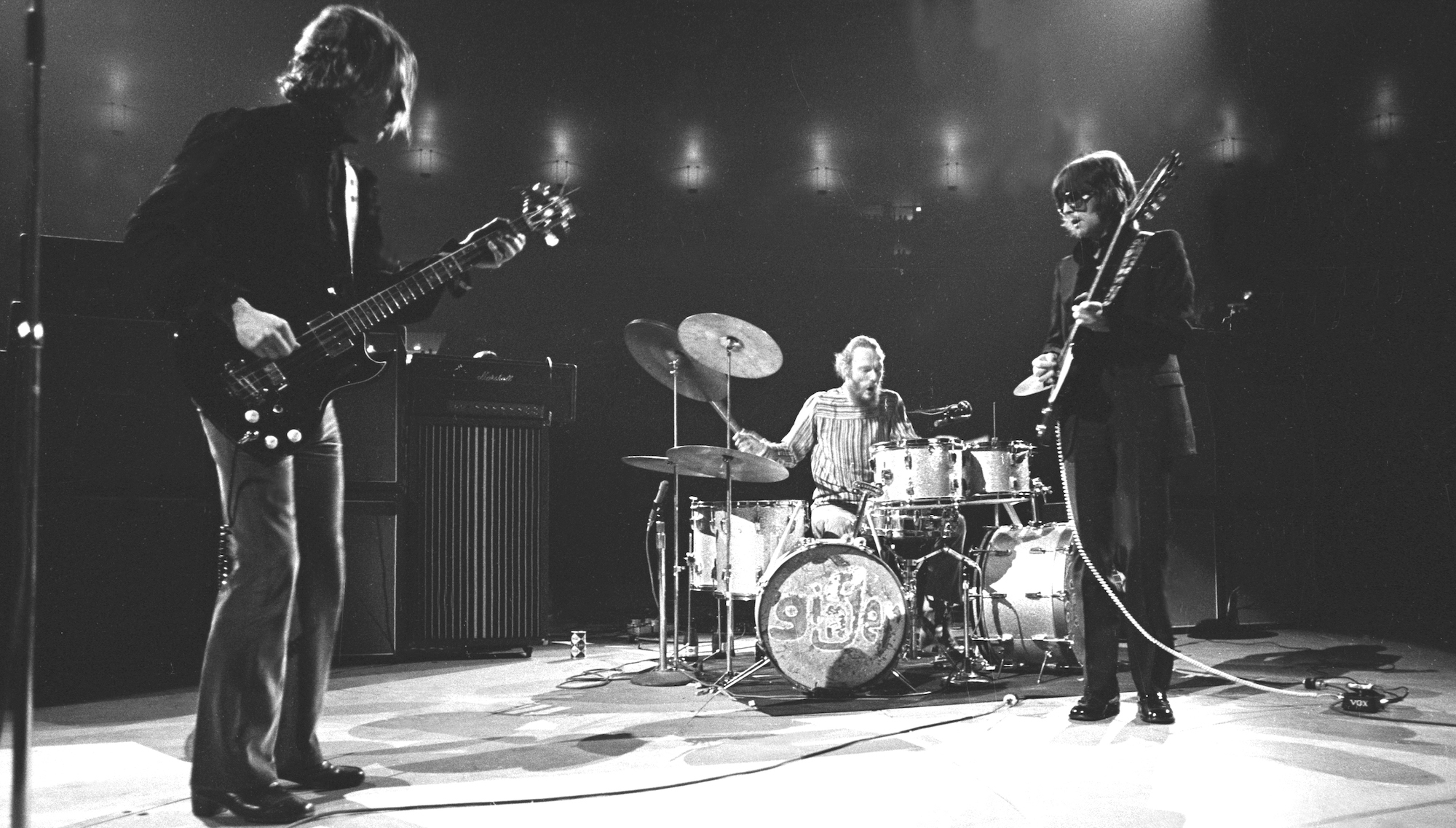
Eric Clapton, Jack Bruce and Ginger Baker gave birth to the power trio, redefined rock improvisation and sold millions of albums. For all their success, nothing could stop the Cream from curdling.
The year was 1968, and guitarist Eric Clapton, bassist Jack Bruce, and drummer Ginger Baker were sitting on top of the world.
Or so it seemed. In three short years, their band, Cream, had recorded a slew of brilliant hit singles, sold an astonishing 15 million records, and redefined the role of the instrumentalist in rock.
Their concerts, which usually sold out immediately, had become legendary for the trio’s ferocious virtuosity and wild, blues-based improvisations that exploded with a jazzy sense of adventure.
But all was not well in Cream. The problem, it was whispered, was ego. And as the individual musicians’ reputations grew and heads swelled, their amp rigs ballooned accordingly.
“Cream’s last year was extremely painful for me,” recalls Baker. “When we started in 1966, Eric and Jack had one Marshall each. Then it became a stack, then a double stack, and finally a triple stack. By 1968, I was just the poor bastard stuck in the middle of these incredible noise-making things. It was ridiculous.
“I used to get back to the hotel and my ears were roaring. That final year damaged my hearing. The incredible volume was one of the things that destroyed the band. Playing loud had nothing to do with music. There was, in fact, one gig where Eric and I stopped playing for two choruses. Jack didn’t even know. Standing in front of his triple stack of Marshalls, he was making so much noise he couldn’t tell.”
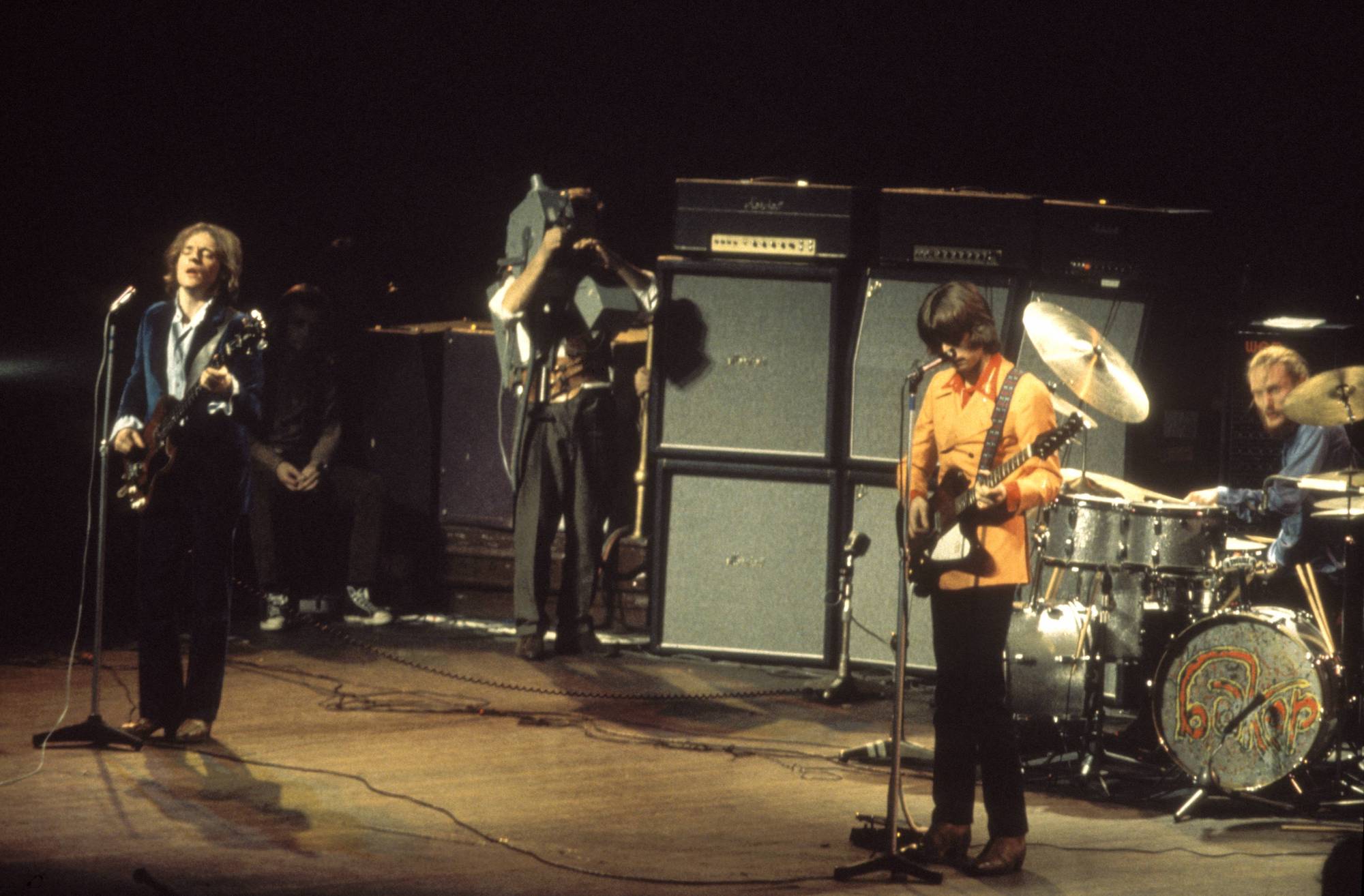
But while the band came to a crashing halt after three volatile years, it’s nearly impossible to exaggerate the importance of Cream.
They were rock’s first power trio: they gave birth to the notion of the “rock virtuoso,” laid the foundation for heavy metal, and inspired several generations of bands, from Black Sabbath to Van Halen to Smashing Pumpkins. And while they are best remembered for their sophisticated instrumental work, Cream also recorded some remarkable pop singles, including Sunshine of Your Love, White Room, and Badge.
Cream came together in mid-1966, when Baker left the respected British rhythm-and-blues ensemble Graham Bond Organization, Bruce (formerly of Graham Bond) left Manfred Mann, and Eric Clapton, already a legend in Britain, left John Mayall’s Bluesbreakers.
I thought, ‘Wait, there’s something going back here that I’m not aware of.’ The ‘you’ve done it again’ implied that this was sort of a pattern that existed before I knew either of them
Eric Clapton
The group’s formation was set in motion by Baker, who reached out to Clapton and won him over with his grand vision of “becoming the biggest pop group in the world.”
“I had always liked Ginger,” explained Clapton. “Ginger had come to see me play with John Mayall. After the gig, he drove me back to London in his Rover. I was very impressed with his car and his driving. He was telling me that he wanted to start a band, and I had been thinking about it too. It was a sort of coincidence – synchronicity, really. We were thinking the same thing at the same time.”
Clapton agreed to join Baker’s new group, but he unwittingly threw a wrench into the drummer’s plans. Clapton made a special request that Jack Bruce be recruited as the group’s bassist.
Clapton had briefly played with Bruce at the tail end of his tenure with John Mayall and came away impressed by the bassist’s skill. Unbeknownst to Clapton, Baker and Bruce were like oil and water. The relationship had proven to be so turbulent that Bruce, uncomfortable with Baker, had left the Graham Bond Organization even as their fortunes were rising.
So eager was Baker to form a partnership with Clapton that, despite his misgivings, he agreed to have Bruce come aboard. Clapton, still unaware of the tension between his new bandmates, witnessed its volatile nature at the new group’s first get–together.
“We had our first talk-through rehearsal at Ginger’s house in Neesden,” remembered Clapton. “Those two had an argument right away. Jack had done an interview and let the cat out of the bag about the band. Ginger was upset about that, and the [argument] went along the lines of, ‘There you go, you’ve done it again!’
“I thought, ‘Wait, there’s something going back here that I’m not aware of.’ The ‘you’ve done it again’ implied that this was sort of a pattern that existed before I knew either of them.”
Dubbed the Cream by Eric Clapton, with a nod to their much-heralded reputations as soloists, the group accepted an invitation to perform at the July 1966 Windsor Jazz & Blues Festival. Barely a month old and with precious few original songs to their credit, Cream performed spirited blues re-workings that thrilled the large crowd and earned them a warm reception.
The group expanded their budding European following on the strength of the singles Wrapping Paper and I Feel Free, and Fresh Cream, their impressive 1966 debut album.
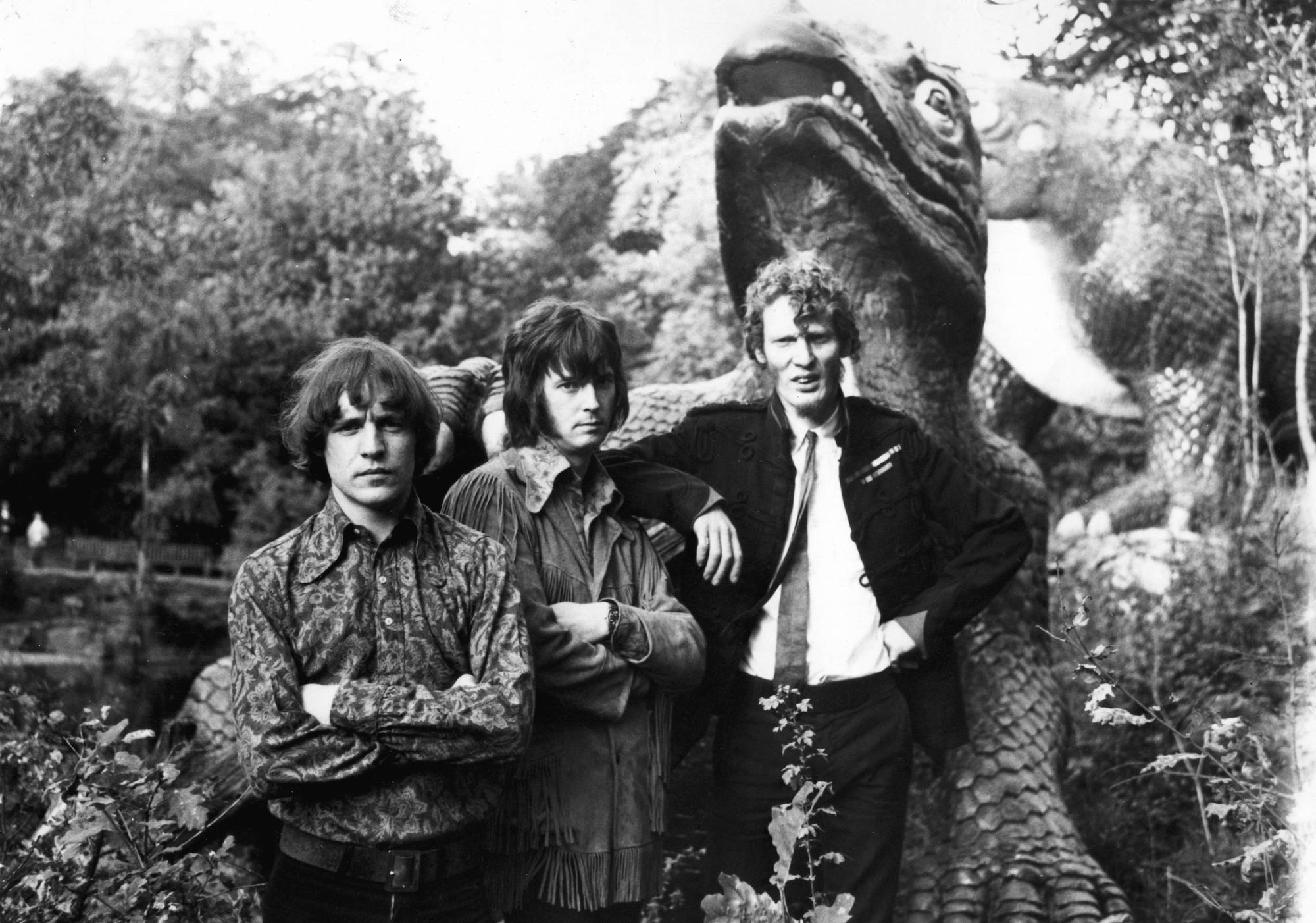
In America, Cream took longer to take hold. Despite the enduring popularity of songs such as White Room and Crossroads, they were hardly an overnight sensation. They arrived with little fanfare, and Fresh Cream struggled to find an audience. There was no Ed Sullivan Show, no Monterey Pop Festival – just hard work and a grinding tour itinerary filled with small club and college dates.
With the release of 1967’s Disraeli Gears, however, the group’s popularity exploded. Aided initially by “underground” FM radio airplay, Cream received an enormous boost when AM Top 40 radio, which had shunned the group as too hard and psychedelic, jumped on the bandwagon. That acceptance and exposure helped make Sunshine of Your Love, the group’s signature song, the largest selling single in the history of Atlantic Records up to that time.
Cream’s adventurous music directly reflected the incredible confidence each member had in his own abilities. The group successfully blended a variety of influences – spanning Delta blues, avant-garde poetry, and psychedelic pop – while forging a unique sound and style.
Heartened by their success, Cream followed Disraeli Gears in grand fashion with the lavish, 1968 double album, Wheels of Fire. While Frank Zappa’s Mothers of Invention had previously established the viability of double records for rock artists, Cream’s ambitious marriage of freewheeling studio recordings and raw live performances shot to the top of the charts.
On the surface, Cream were one hot and happy band. Unfortunately, despite their staggering success, they routinely teetered on the edge of destruction. The clashes between Baker and Bruce worsened and soon ensnared Clapton.
By the time Goodbye, their fourth album, was issued in 1969, the group had, in November 1968, already celebrated their farewell via a filmed finale at London’s Royal Albert Hall. Cream were finished, and neither Baker, Bruce, nor Clapton could summon the energy to resolve their differences.
As Clapton told Guitar World in 1994, “It was very intense; it actually seems like we were together for four or five years, but in fact it was very short. My overall feeling about it now is that it was a glorious mistake. I had a completely different idea of what it would be before I started it, and it ended up being a wonderful thing, but nothing like it was meant to be.
“It was meant to be a blues trio. I just didn’t have the assertiveness to take control. Jack and Ginger were the powerful, dominant personalities in the band; they sort of ran the show and I just played. In the end, I just went with the flow and I enjoyed it greatly, but it wasn’t anything like I expected at all.”
In 1997, around the time of the Complete Cream four-CD box set release, Guitar World caught up with Bruce and Baker, who had apparently resolved their longstanding differences to the point where they could discuss Cream and their friend Eric Clapton. Joining them were Cream lyricist Pete Brown and producer/engineer Tom Dowd.
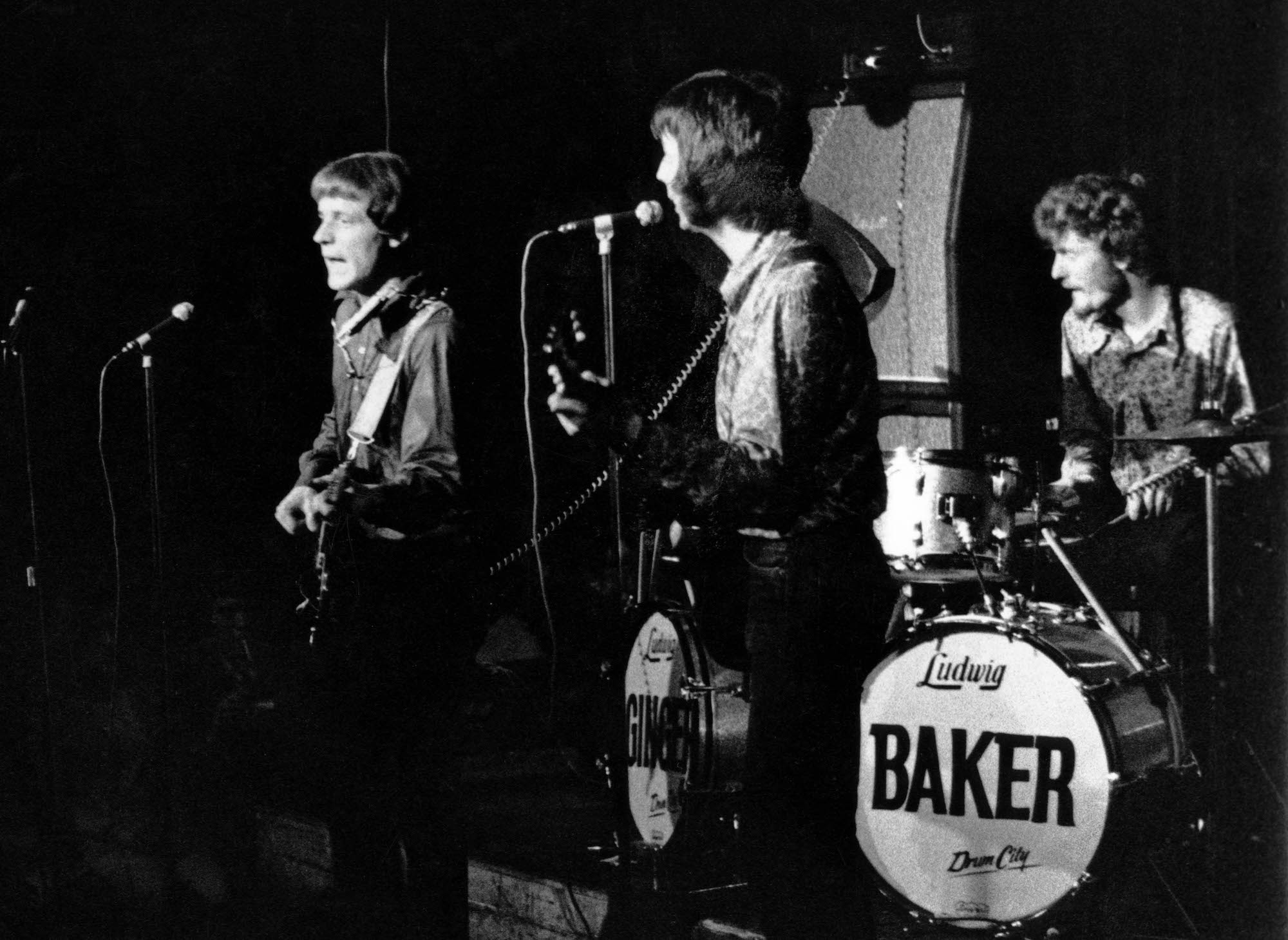
Whose idea was it to form Cream?
Jack Bruce: “Forming Cream was absolutely Ginger’s idea. He asked Eric to join, and then Eric suggested that they get me to sing and play bass. I had only sung one or two numbers with Graham Bond, but Eric could see that there was some potential there. Ginger then had to come and ask me – which I thoroughly enjoyed!”
Ginger, when did you become convinced of Cream’s potential?
Ginger Baker: “I knew we had something special from the very first time we played together. We got together at my little maisonette on Braymore Avenue, in back of which was a park where all the local kids used to play. It was summer and, as we played anyway, the kids congregated on this little hill behind my place were boogying. They really enjoyed the music. It was total magic immediately. We were three people made to play with each other.”
The places were packed solid and there was often as many people outside gigs as there were inside
Ginger Baker
What happened next?
Bruce: “There was a kind of plan in place when we started. We did some rehearsals in a church hall, learning how to play with each other. We were trying out songs and preparing for a couple of shows, including an unannounced gig at the Twisted Wheel in Manchester.”
Baker: “Cream went straight onto the same club circuit that Graham Bond had been doing. I went to Graham’s booking agent, Robert Masters, and said, ‘Look, you’ve got to charge more money.’ Masters said that no one would pay it, but I insisted that we be paid 45 pounds a gig instead of the 40 pounds that Graham was getting, and everybody paid it!
“I had to keep prompting them to ask for more money, and every time they did, people would pay it. The band’s reputation was huge before it was formed, really.”
When did the group begin to stand on its own?
Baker: “When Cream started to get going, our manager, Robert Stigwood, was paying a lot of attention to the Bee Gees. He would be taking out huge ads in Melody Maker for them, while the Cream would get a two-line mention. Stigwood was convinced that the Bee Gees were going to be the biggest hit of the Sixties. I don’t think he really started to get behind Cream until Fresh Cream was released in the U.S. by Atco.
“When the first album went into the charts in America – albeit at something like No. 198 or whatever – Stigwood was flabbergasted. Eric, Jack, and I were convinced. We knew what we had. But I don’t think Stigwood came around until he saw that we might actually make some money.
“It was pretty obvious that Cream was something special. I had been playing the circuit for three years with the Graham Bond Organization, and we would draw an average of 800 people for a big pub gig. When we went out with Cream to the same places, there was suddenly 1,500 people. The places were packed solid and there was often as many people outside gigs as there were inside. The venues just weren’t big enough to let all the people in.”
What was the first original Cream song developed by the group?
Bruce: “When Cream got started, I began to think about writing singles. I was very enamored of the Beatles, like everybody else at the time. I was impressed by what they were doing with their two-and- a-half-minute singles. However, what I came up with instead was N.S.U., which was pretty freewheeling. It was unusual because of the length between the verses, but I was quite pleased with it.”
Besides writing original material, you were also busy reinterpreting a series of blues masterworks, which became a major component of Cream’s repertoire.
Bruce: “Because of the interaction between the three of us, our version of the blues just naturally took on a different structure. I’m So Glad, written by Skip James, was one of the first examples, and certainly Willie Dixon’s Spoonful was something that we made our own.
“At that time, bands like John Mayall’s Bluesbreakers and Fleetwood Mac were trying to recreate the sounds of Chicago blues. Doing that was completely valid, but it was just something I didn’t want to do. Those original blues records had been done so well, which meant you could only ever be second best. But, if you treated those songs with a great deal of love and respect, you could remake them into your own.
“When we later got to meet people like Muddy Waters in Chicago, they were knocked out by our approach and how highly we regarded their music.”
How did lyricist Pete Brown, who was responsible for the words of songs like Sunshine of Your Love and Tales of Brave Ulysses, become part of the creative team?
Baker: “We needed someone to help us with songwriting, and Pete Brown immediately came to mind because I had played some gigs that fused jazz and poetry. As the jazz players sat onstage, the poets would come up and read their work in front of the audience. Pete Brown was one of the poets I really liked.”
Bruce: “Yeah, I was sort of given Pete Brown by Ginger. Ginger and Pete were at my flat, trying to work on a song, but it wasn’t happening. My wife Janet then got with Ginger, and they wrote Sweet Wine while I started working with Pete.”
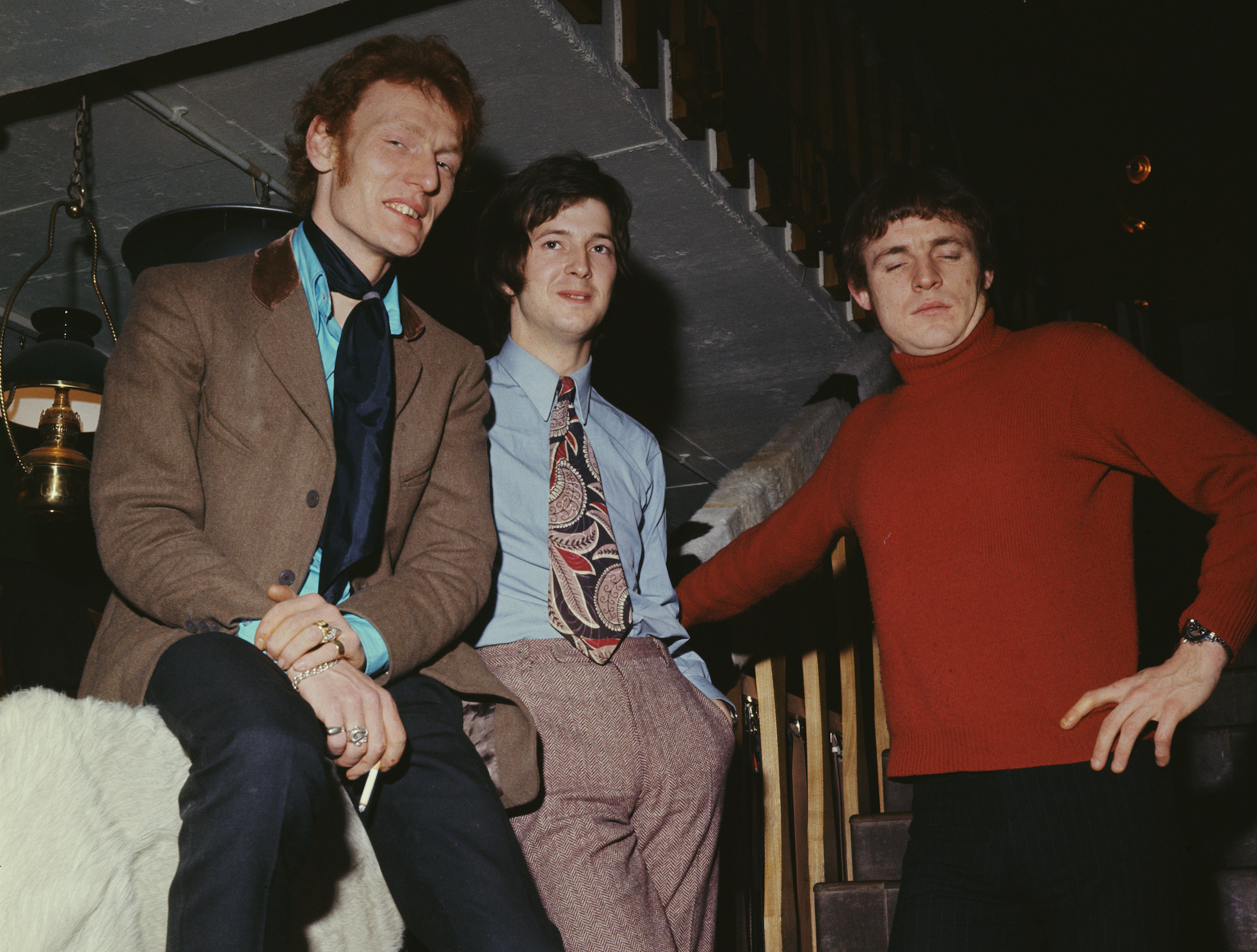
Pete Brown: “I received a call from Ginger, who said that his group had completed a song but needed to have words. I didn’t really like rock and roll at that time. I didn’t even like the Beatles – I just couldn’t understand it. I was an avid jazz and blues fan. I had loved the Graham Bond Organization because it was made up of all these elements that I enjoyed.
“Based on my admiration for the Organization, I went to see Cream, not knowing what I was about to get into. I knew something about song form, not very much, but I had listened to a great deal of music and developed good ears. Jack played me his song, and I understood the shape and rhythmic organization.
The whole object of Cream was to become a huge pop band
Ginger Baker
“I proceeded to unload every cinematic image that I had ever stored into this song. For some reason, he actually accepted it and the song became Wrapping Paper, the band’s first single.”
So Wrapping Paper was the first successful Bruce/Brown composition?
Bruce: “Yeah. But I’m not sure that we actually ‘succeeded’ with Wrapping Paper. What I was trying to do musically was play with people’s expectations of us as a blues band. It is a blues song, but it doesn’t have very obvious blues changes.”
Baker: “In retrospect, Wrapping Paper was pretty pathetic [laughs]. Especially when the credit came out as Bruce/Brown. We had all been involved in that. It was an attempt to do something really pop-styled. The whole object of Cream was to become a huge pop band.”
How did you feel about your next single, I Feel Free?
Bruce: “I was quite pleased with the way that I Feel Free turned out. Even though I hadn’t had much experience in recording studios prior to Cream, I had very definite musical ideas about the songs I had written.
“I wrote all of I Feel Free out on paper, because that was the way I was still working in those days. Because of my classical background, it was easier for me to write things down and then try to realize them in the studio. I know that Ginger thought the song could have been recorded better, and we recut it, but after a little – shall we say – ‘discussion,’ it was agreed that we might end up losing what we liked by trying it again.”
What was it like recording Fresh Cream?
Baker: “We recorded the first album very quickly. It took something like 10 days. We were in complete control of our destiny. Robert Stigwood [credited as the album’s producer] was rarely there at the start of the sessions. He turned up when the album was nearly finished.
“The first album was something I was completely pleased with, to be quite frank. A lot of that album was made up of blues things that Eric brought to the table, like Cat’s Squirrel and Rollin’ and Tumblin’. We played those numbers live from the outset, and they always got the public going.”
What do you remember about Cream’s first American tour?
Baker: “We were playing mostly at colleges for what seemed like extremely small money – only about three thousand bucks a gig. The first place we ever played was Murray the K’s Music in the Fifth Dimension show in New York, and it was a fiasco. Murray was an influential New York DJ who put together these huge package shows that would feature dozens of bands. They wanted us to play three numbers and thought it would only take three minutes!
“There were supposed to be four shows a night, and on the first night there was only time for three. The Who were also on the bill, and the show ran over by something like 80 minutes. Murray the K was freaking out. After the second show, he came to our dressing room to try to get us to cut down our set. I was lying under the table, having consumed a bottle of Baccardi. Murray saw me and said, ‘How’s he gonna play?’ I told him not to worry about me.”
Bruce: “It was very bizarre. The complete show by all the artists was only supposed to last two hours. We had been given three songs and were buried at the bottom of the bill. After the first show, we were cut back to I’m So Glad. Then they wanted us to cut the length of that! Meanwhile, the spot for the Jackie the K Dancers, led by Murray’s wife, seemed to get longer and longer. It was so wild that Murray the K had security guards to keep us in the building. That was our introduction to New York and the United States.”
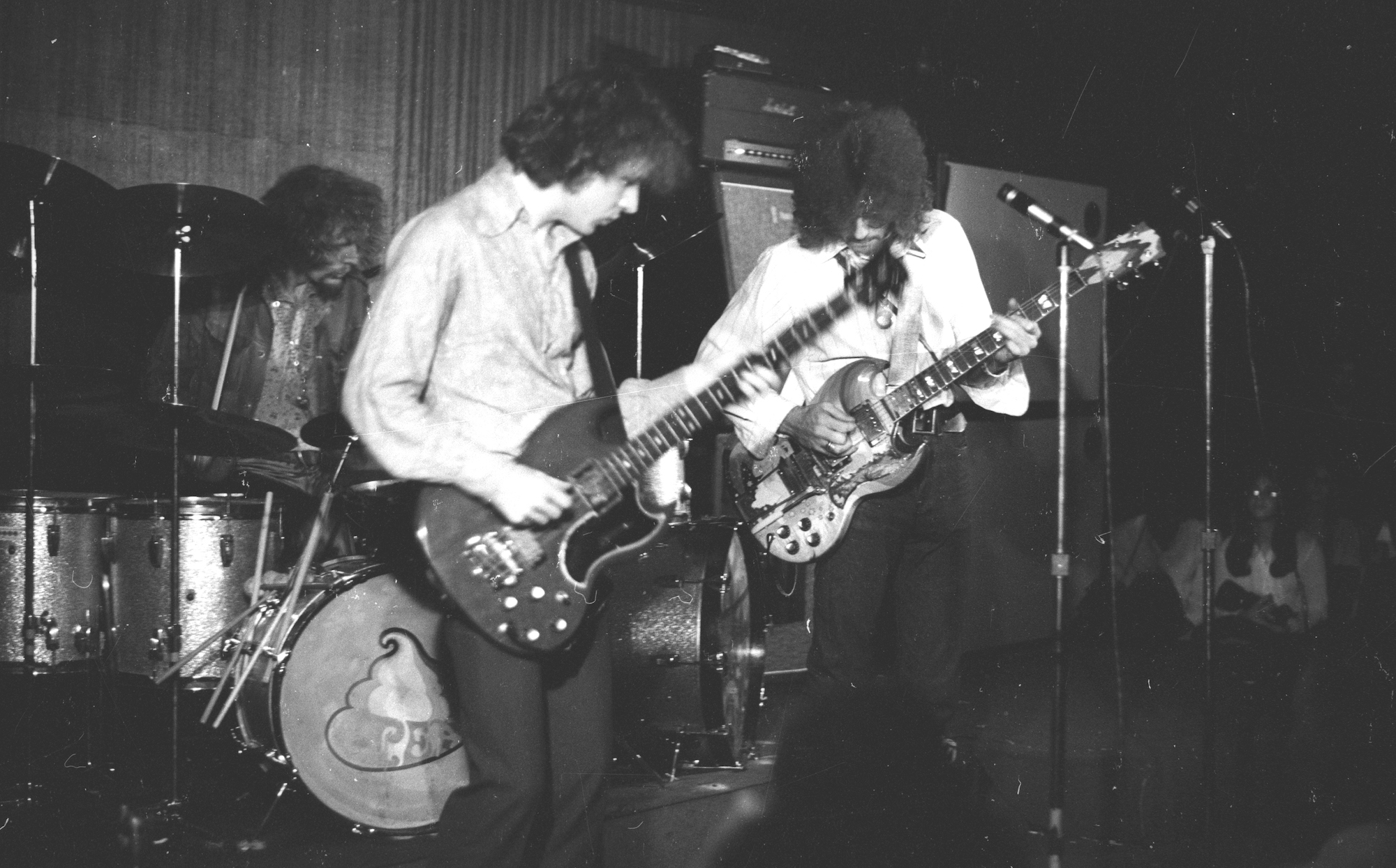
What do you recall about engineering Cream’s second album, Disraeli Gears?
Tom Dowd: “I got a call from [Atlantic Records label chief] Ahmet Ertegun late one afternoon, asking me to record a group that Robert Stigwood had sent over from England. Ahmet told me to get whatever I could out of them before their visas expired.
“When I arrived at the studio the next morning, the roadies were loading in these double stacks of Marshall cabinets and double-bass drums, and I thought, ‘What the hell is this?’ I hadn’t known anything about them except the fact that they were a three-piece and that two of the three could sing lead.”
In addition to Tom, Felix Pappalardi, the late bassist and songwriter, made significant contributions to the group’s sound. How did Felix get involved?
Baker: “That came about during Disraeli Gears. We had no real game plan for making the album.
“The first thing we cut was the traditional blues Hey Lawdy Mama, and Felix was at the session as a guest of Ahmet Ertegun. At the end of the session, he asked if he could take a copy of the tape away to write some words for it. He came back the next day with Strange Brew. Felix got Eric to sing the lead because he had done so for Hey Lawdy Mama. All of this didn’t go down so well with Jack, because he considered himself to be the lead vocalist.
“Anyway, Eric and I were both very impressed with Felix. We had some discussions with Ahmet and Tom Dowd and afterward got Felix to come in and produce the album. He got very involved musically. Ahmet was also at the studio almost every day. I was also extremely impressed with Tom Dowd, who was an absolutely amazing engineer. Actually, he wasn’t just an engineer – it was like having another musician around.”
Dowd: “Felix usually sat out in the studio while I was recording in the control room – especially during playbacks. He would point out certain things to each band member where he felt improvements could be made. There was a lot of dialog between Felix and the three of them. Some of it was specific to the session, but it also included exposing them to the styles of different artists and sounds.”
How did Sunshine of Your Love develop?
Bruce: “Pete Brown and I had been working all night, trying to write stuff, and we hadn’t got anywhere. I picked up my double bass and played the riff. Pete looked out the window, saw that the sun was coming up, and wrote, ‘It’s getting near dawn/And lights closed their tired eyes…’”
Brown: “Eric added the hook. Funny enough, I never liked it, although it makes a lot of sense, musically. I didn’t like the title, Sunshine of Your Love. I suppose, though, that it hit the mark with so many people because it was such a broad idea. In the long run, thank you, Eric! But in the short term, I must admit I was pretty miserable about it.”
Bruce: “I knew Sunshine of Your Love was going to go over well because both Booker T. Jones and Otis Redding heard it and told me it was going to be a smash. Their opinions really meant a lot to me.”
Where did Cream’s tradition of long, extended individual solos first take root?
Bruce: “When we started out, a typical rock band set lasted only 45 minutes. When we got to the Fillmore West, in San Francisco, the audience wanted us to stretch out. I remember them shouting, ‘Just play!’ That’s exactly when we started to play longer. It became a kind of trademark for us, which, in a way, was a mixed blessing.
“It was very difficult to do every time we played, and it took its toll. I used to think of it like the Who smashing their instruments: it’s expensive to have to do that night after night. For us to have to do very long improvisations every night was expensive on our brains!”
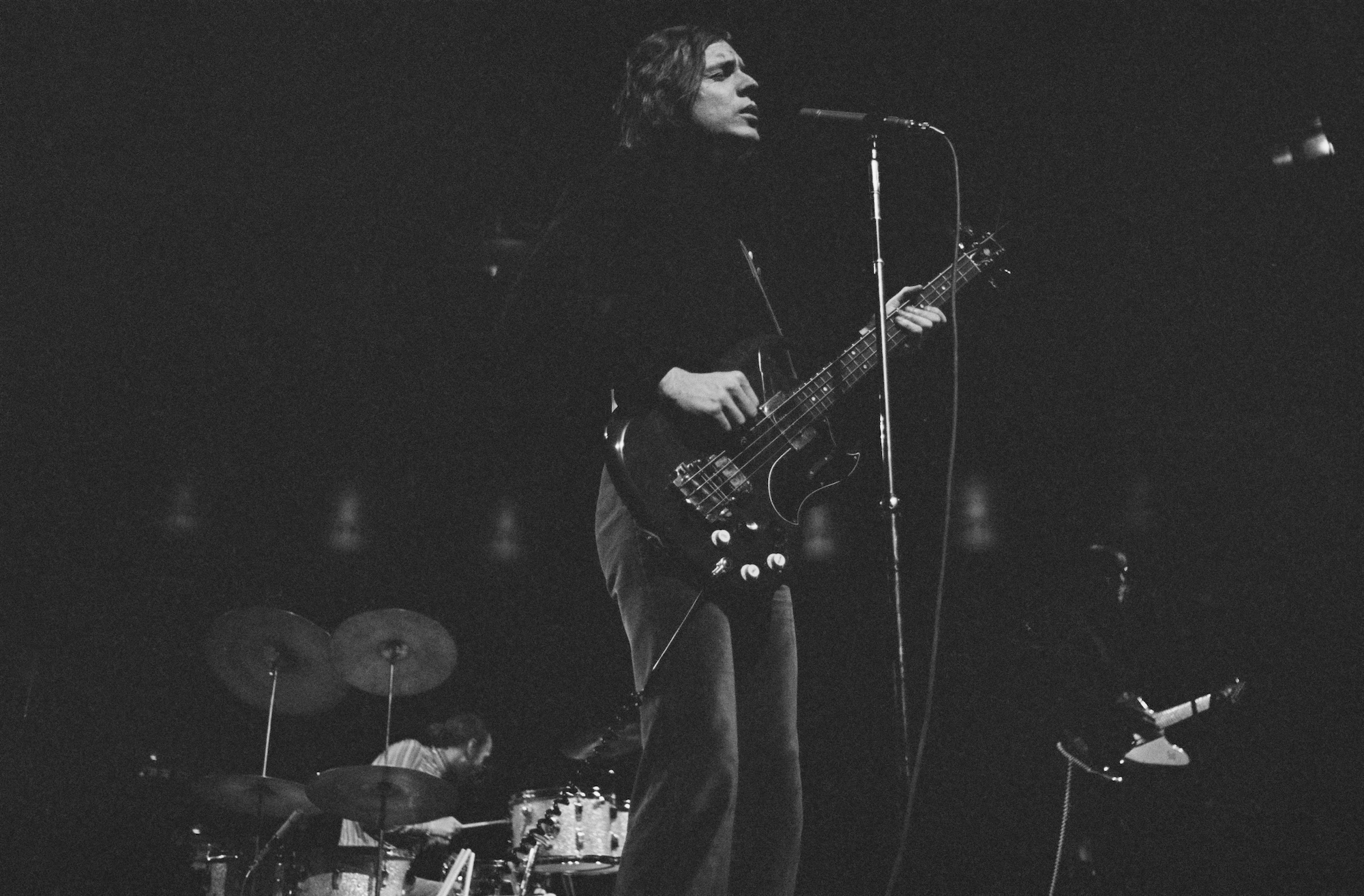
The Wheels of Fire sessions in June 1968 were really productive and yielded a number of classic Cream songs. How did White Room evolve?
Bruce: “I had written words to the song – almost scat words – which started off about cycling through France. I had a definite idea about the feeling I wanted the song to have, and Pete came up with a set of lyrics. Together, we rewrote and rewrote until we had something we were both very happy with.”
Brown: “My draft of White Room started its life as an eight-page poem. Because I had had some spurious journalistic training at college, I was able to pare my eight-page poem to a single page of lyrics.”
Bruce: “Musically, White Room was inspired by Jimi Hendrix. Jimi had a way of using chord changes and taking traditional ideas and modernizing them. He was a big fan of the band, and we certainly loved his music.”
The acoustic As You Said, from Wheels of Fire, was an interesting departure for the band.
Bruce: “I wanted Eric to play guitar on that track, but he encouraged me to do it. I was always embarrassed about my acoustic guitar playing – especially having Eric Clapton in the band. But Richie Havens showed me this great open tuning, and I wanted that guitar sound on the track. When I had the music completed, I went to Pete. He had these words already written which fit right on top of what we had done. It was perfect.”
Politician is another memorable track from those sessions.
Bruce: “We were scheduled to perform on the BBC and needed a song. Pete had given me the words, which had a great blues feel to them. Eric and I were jamming and trying to come up with a lick. There was no big writing session or anything like that. It came together quickly, and we performed it for the first time on that radio program.”
By the time Wheels of Fire was being recorded, the Bruce/Brown team had begun to outpace both Eric and Ginger as songwriters. Did that affect the band negatively?
Bruce: “The sessions for Wheels were very productive, but I think problems were beginning to emerge, because Eric and Ginger weren’t coming up with as much original material. I wasn’t even particularly happy that a lot of the songs were coming from Pete and me.
“Eric and Ginger were beginning to write some great stuff, but just not as fast. I would have preferred that management let us have a few months to work on new material, because that would have kept us moving forward.”
When we would listen to playbacks in the control room, there were times when I thought they were going to kill each other
Tom Dowd
Brown: “My poetry background had me prepared for writing on demand. I had also stopped drinking and taking drugs, which helped a great deal. Jack was bubbling over, full of new ideas. Once he and I had established a way of working, there was a wellspring of material that came quite quickly.
“I tried to write with Eric and Ginger, but it didn’t seem to work out. Possibly it was due to chemistry, as Ginger was able to collaborate with Mike Taylor on a number of things, but we were never able to really connect.”
As engineer for most Cream sessions, Tom, did you notice tension in the band during the Wheels sessions?
Dowd: “With Disraeli Gears, once Ahmet felt that the group was comfortable, he left the details to Felix and me. Apart from my tape operator and a roadie or two, there was nobody else around.
“When the group came back to record Wheels of Fire, there was a whole different set of circumstances. I knew that there had been some animosity among the three players, but when we would listen to playbacks in the control room, there were times when I thought they were going to kill each other.”
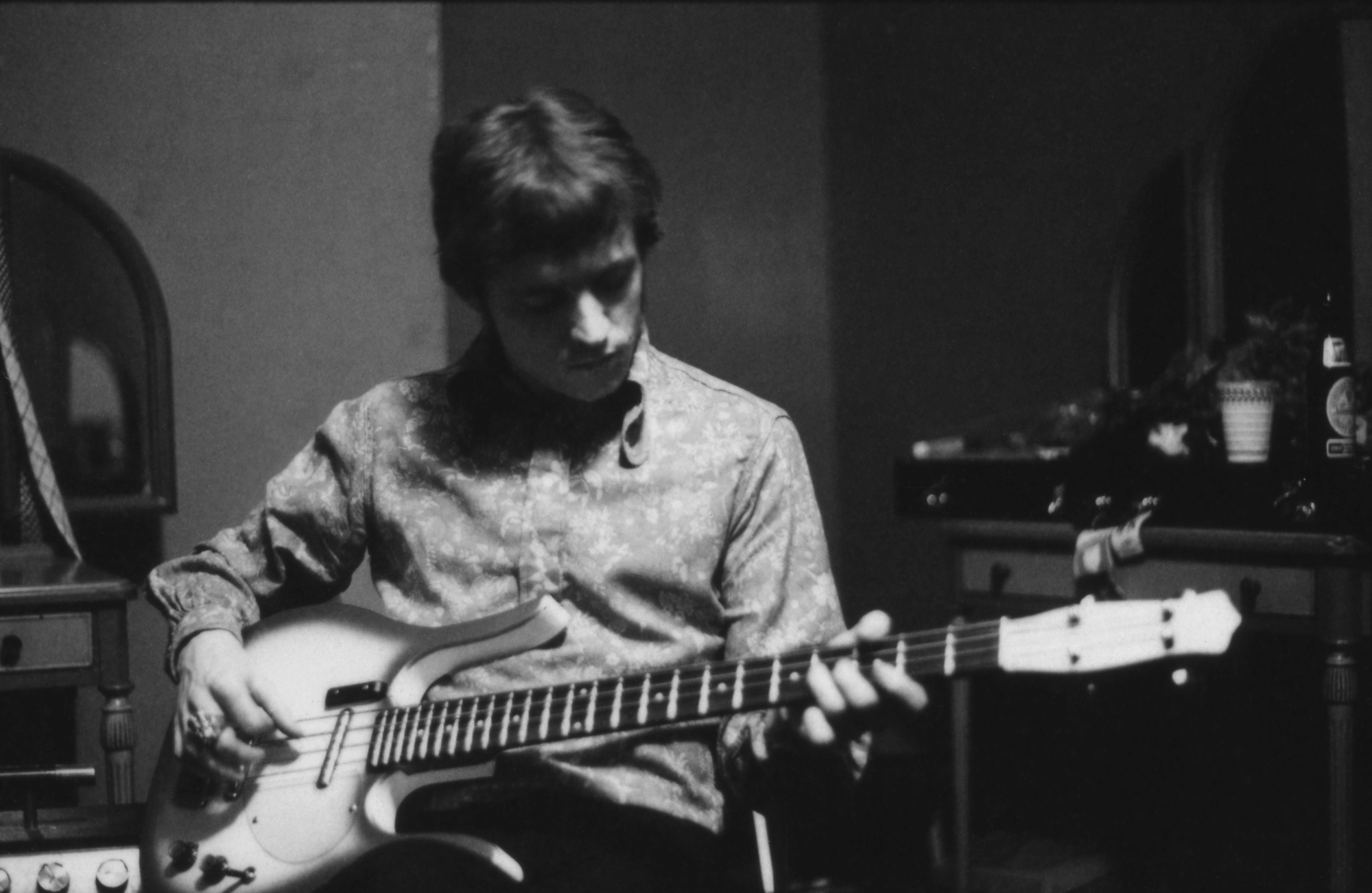
Brown: “I know there was some resentment from Eric and Ginger, but songs were needed and Jack and I were there with the songs – good songs, which have stood the test of time.”
Baker: “The problem wasn’t that Jack and Pete were writing songs; the bone of contention was whether they should get all the credit for them. It still rankles me that I got no credit whatsoever for contributing heavily to the arrangement of two of Cream’s most popular tunes.
“The whole way Sunshine turned out was totally my input, and I’ve never even received a thank you for it. Also, the whole introduction to White Room – the 5/4 ‘Bolero’ thing – was my input to the tune. When both songs came out, I wasn’t even mentioned. This happens to many drummers.”
With the group’s tremendous success, couldn’t anything be done to mend the personal disputes?
Baker: “Not really. The problems started very early on. Actually, the only thing that held the band together was its success.”
Bruce: “In addition to the band’s creative tensions, there really was a lack of foresight or belief on behalf of the management. We worked much too hard. Three guys on the road, away from their friends and families for three long tours – that can be pretty destructive to a band. We certainly weren’t the first band that wasn’t helped by those circumstances.”
Was Clapton’s discovery of the Band’s Music from Big Pink a factor in the group’s breakup?
Bruce: “Like a lot of people, Eric was deeply influenced by that album. We fell in love with the economy of that record and began to think that what we were doing was okay, but maybe kind of florid. I think the idea of us getting back to the roots indicated to me that we had lost a bit of our confidence in what we’d been doing.”
Clapton has often spoken of Rolling Stone magazine’s condemnation of the band as another factor behind his decision to leave. [In the May 11, 1968, issue, writer Jon Landau delivered a lengthy critique of Cream in concert, citing “one-dimensional” improvisations that “made no use of dynamics, structure, or any of the other elements of rock besides drum licks and guitar riffs.” In July that year, the magazine printed editor Jann Wenner’s assertion that “Cream is good at a number of things, unfortunately songwriting and recording are not among them.”] Was this really an issue?
Baker: “The article had a very detrimental effect on Eric because he thought Rolling Stone had a lot of credibility. He was a very sensitive fellow, and I’m convinced the article did him a great deal of harm. It was his favorite magazine, and to read something like that in it hurt him.”
Bruce: “I remember that article very well. That certainly contributed to the end of Cream, but it was really quite silly. It tried to say that Eric Clapton couldn’t play the guitar. That was the kind of thing one would expect from the English music press, not Rolling Stone. It certainly hurt me, because they questioned our integrity. We were always sincere about music, right up until the end.”
Baker: “On the last US tour, after a gig in Texas in 1968, Eric came to me and said, ‘I’ve had enough.’ And I said, ‘So have I.’ And that was it. We decided, for different reasons, that it was all over. When Cream died, it died. Short of murder, we couldn’t solve a problem between us.”
While Cream decided to disband, you agreed to record Goodbye, a farewell album, and perform a November 1968 farewell concert at London’s Royal Albert Hall. Why?
Baker: “We wanted to go out on an up note. That’s why we did the album and the show at the Albert Hall. In fact, when we performed that last show, we were just blown away by the emotion from the audience. It went so well that we all wondered – just for a moment – if we had made the right decision, to split up.”
This article was originally published in Guitar World in 1997.







